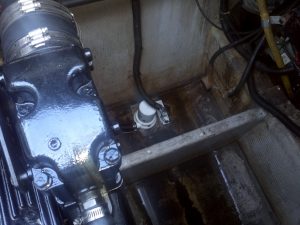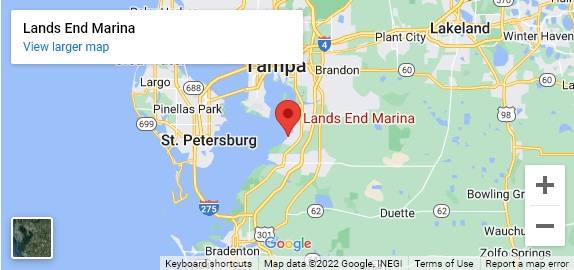The bilge pump is one of the unsung heroes of your boat. It keeps the water where it”s supposed to be, outside of your boat. There are two main styles of bilge pumps. They can come either manual or automatic and in a variety of sizes and shapes to fit your style of boat. Larger boats can have more than one bilge pumps in several locations throughout the boat.
Manual Bilge Pumps
 The most common style, especially in smaller boats is a manual bilge pump. This pump is activated by a switch on the dash or somewhere else in the boat. With the switch in the on position the pump is activated and the water is pumped overboard via a hose and thru hull fitting in the side of the boat. This system works well however, you have to remember to keep an eye on the bilge to see if water is in there and then turn on the pump. This can be difficult when the pump is below deck and is not obviously seen from inside the boat. In a Jon boat or a Skiff, where the bilge is exposed, this is not as much of a problem. However, in the vast majority of boats, you have to work to get to the bilge. Standing on your head during a day of fun just to see if the bilge is dry is not something most people want to do on a regular basis.
The most common style, especially in smaller boats is a manual bilge pump. This pump is activated by a switch on the dash or somewhere else in the boat. With the switch in the on position the pump is activated and the water is pumped overboard via a hose and thru hull fitting in the side of the boat. This system works well however, you have to remember to keep an eye on the bilge to see if water is in there and then turn on the pump. This can be difficult when the pump is below deck and is not obviously seen from inside the boat. In a Jon boat or a Skiff, where the bilge is exposed, this is not as much of a problem. However, in the vast majority of boats, you have to work to get to the bilge. Standing on your head during a day of fun just to see if the bilge is dry is not something most people want to do on a regular basis.
Once the water is out of the bilge you have to turn the pump off to avoid damaging the pump. If the pump is run “dry” it can overheat and fail. Having to monitor when to turn the pump on and off again is the main drawback to this style of pump.
Automatic Bilge Pumps
The alternative to the standing on your head method is to have a automatic bilge pump. This is either a standalone bilge pump with a float switch wired into it or an “all in one unit” where the switch and pump are in one housing. As long as there is room for a remote mounted float switch any boat that currently has a manual bilge pump can be converted to an automatic style system.
An automatic bilge system is set up so that when water enters the bilge and reaches a certain level the pump turns on and when the water is pumped down to a certain level the pump turns off again. In good working condition this system is preferable to the manual style pump because it is more hands free and one less thing to have to monitor continuously while you”re on the water. It can also alert you to a problem if water is entering the boat when it shouldnt. You should still keep an eye on the bilge every once in a while because if something bad does happen and the boat develops a large leak the bilge pump cannot keep up with the water entering the boat and you could potentially sink.
Even though the automatic style bilge pumps are designed to turn themselves on and off they should still be wired to a manual switch. This gives you the option of turning the pump on when you want in case of a float switch failure. All automatic systems can be wired this way regardless of the components used. If the boat has a battery switch and you want the float switch side of the pump to work all the time it has to be wired to directly to the battery. Either wire the positive to the battery post on the switch or the battery itself. The switch needs a fuse inline between it and the battery source to protect the wiring and components.
Size Matters
The size of the boat will determine the size of the pump. Bilge pumps are rated in how much water they can pump. This is commonly known as gallons per hour (GPH). The actual gallons a pump move in an hour”s time are dependent on lots of factors (hose length, number of bends, amount of lift) so the number is more of an indicator than a actual amount. There are also two common sizes of hoses for pumps. Smaller pumps up to about 800 gallons per hour (GPH) have a 3/4 inch hose barb on them. Larger pumps, 1000 gallons per hour (GPH) and up have a 1 1/8 inch hose barb.
When shopping for a replacement bilge pump it is important to know what size hose you have in the boat. In a lot of boats it is difficult to replace the thru hull fitting that the hose is connected to on the boat side of the pump so as long as the hose is in good shape you can just replace the pump. Most boats will come with a sufficient bilge pump so the hose for an adequate pump is already there. That being said there is no downside to upgrading the size of your pump to a larger GPH as long as the hose size is the same. For example if your boat came with a 500 GPH pump (3/4 inch hose) and you need to replace the bilge pump it takes the same time and effort to replace it with a 800 GPH pump (3/4 inch hose). As long as the pump body will fit you might as well upgrade the system and pump a little more water. When it comes to bilge pumps bigger is better within reason.
A Lonely life
Bilge pumps are one of the components on a boat that no one thinks about until they need them. You should regularly check your pump and switch to make sure they are in good working order so that if you ever do need them to work, they will. Most float switches have a manual override feature allowing you to work the switch and verify it functions correctly. The bilge should be kept free of debris that could clog the pump or interfere with the movement of the float switch. If your pumps not pumping or its time for an upgrade swing by the shop and we can either fix it for you or if you want to tackle the job yourself we can sell you the components you need to get the job done.


